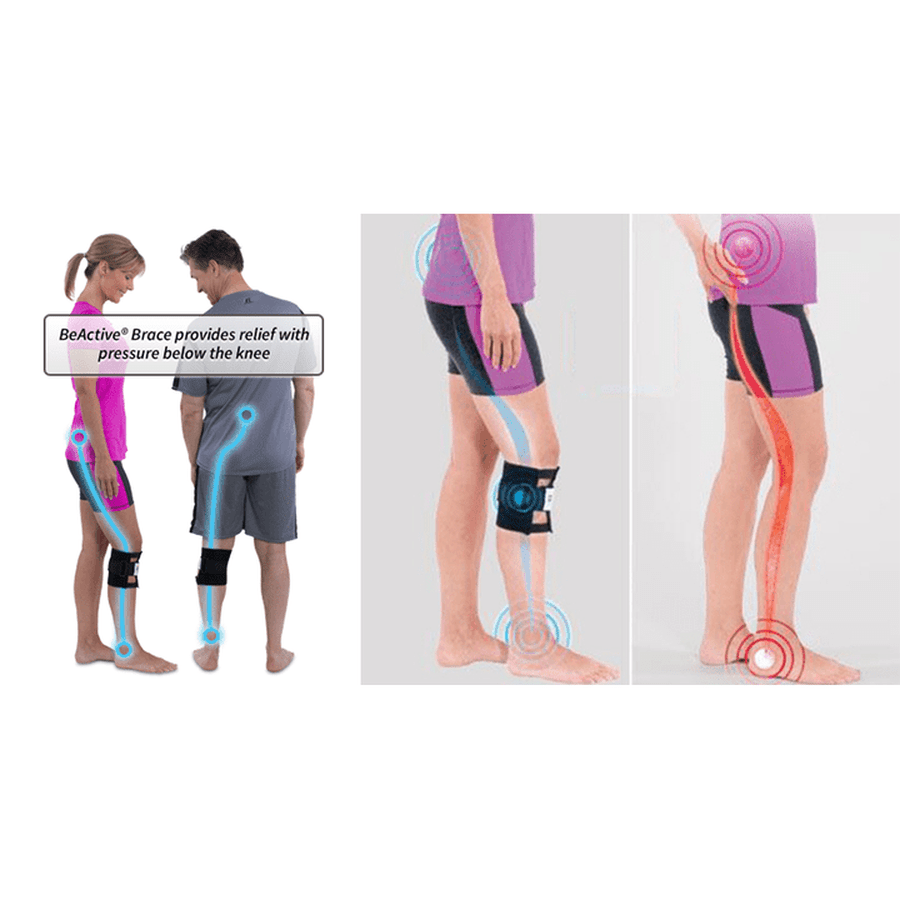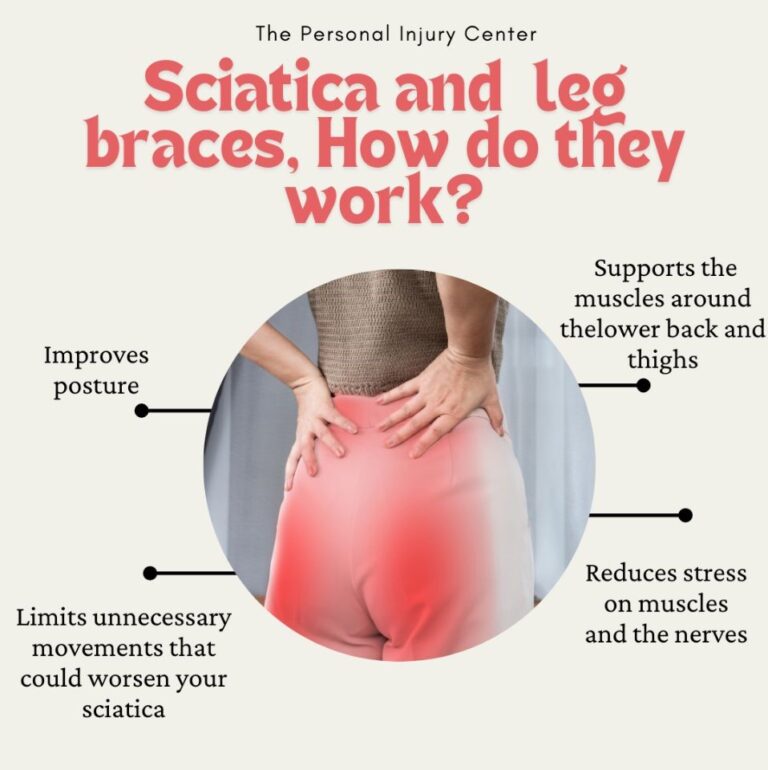Do Sciatic Nerve Leg Braces Work

Imagine the sharp, searing pain shooting down your leg, a constant reminder of the pinched nerve wreaking havoc on your day. Every step feels like a jolt, every movement a challenge. You've tried everything – medication, physical therapy, endless stretches – but the sciatica persists, casting a long shadow over your life. Could a leg brace be the answer, a non-invasive solution to finally find relief?
The question of whether sciatic nerve leg braces truly work is complex, with opinions varying among medical professionals and individuals who've experienced sciatica. While they're not a cure-all, certain types of braces can offer significant pain relief and improved mobility for some, acting as a valuable tool in a comprehensive sciatica management plan. This article will delve into the science behind these braces, explore their potential benefits and limitations, and provide insights into making an informed decision about whether one might be right for you.
Understanding Sciatica and its Management
Sciatica isn't a condition itself, but rather a symptom of an underlying problem. It occurs when the sciatic nerve, the longest nerve in the body, becomes compressed or irritated. This nerve originates in the lower back, runs through the buttocks, and down the back of each leg.
The compression can be caused by a number of factors, including herniated discs, spinal stenosis (narrowing of the spinal canal), bone spurs, or even muscle spasms in the piriformis muscle, located deep in the buttock.
Traditional treatments for sciatica often include pain medication, physical therapy, and in some cases, steroid injections or surgery. These approaches aim to reduce inflammation, relieve pressure on the nerve, and improve overall spinal health.
The Role of Leg Braces in Sciatica Relief
Leg braces designed for sciatica aim to provide support and stability to the lower back and pelvis. This, in turn, can help to reduce pressure on the sciatic nerve and alleviate pain.
There are several types of leg braces available, each with its own mechanism of action. These range from simple compression sleeves to more complex orthotic devices.
Types of Leg Braces for Sciatica
Sacroiliac (SI) Joint Belts: These belts wrap around the hips and provide support to the sacroiliac joint, which connects the spine to the pelvis. Stabilizing this joint can reduce stress on the lower back and potentially alleviate sciatic nerve irritation.
Lumbar Support Braces: These braces provide support to the lower back, limiting movement and promoting proper posture. By reducing excessive bending and twisting, they can help to prevent further aggravation of the sciatic nerve.
Hip Braces: Hip braces can be helpful if the pain is associated with hip instability, such as with piriformis syndrome which compresses the sciatic nerve.
Compression Sleeves: These sleeves fit snugly around the thigh or calf and provide compression, which can help to improve circulation and reduce inflammation. While they don't directly address the underlying cause of sciatica, they can offer some pain relief.
Do They Really Work? Evidence and Expert Opinions
The effectiveness of leg braces for sciatica varies from person to person, and the scientific evidence is mixed. Some studies have shown promising results, while others have found little to no benefit. It is important to consider individual cases.
A study published in the journal Spine found that SI joint belts significantly reduced pain and improved function in patients with sacroiliac joint dysfunction, which can contribute to sciatica. However, the study didn't specifically focus on sciatica caused by other factors.
Many physical therapists and orthopedic specialists recommend leg braces as part of a comprehensive treatment plan for sciatica. They emphasize that braces should be used in conjunction with other therapies, such as physical therapy and exercise, to achieve optimal results.
"Leg braces can be a valuable tool for managing sciatica, but they're not a magic bullet," says Dr. Emily Carter, a physical therapist specializing in spinal conditions. "It's crucial to identify the underlying cause of the sciatica and address it with a multi-faceted approach. A brace can provide support and pain relief while you're working on strengthening your core and improving your posture."
However, some medical professionals express skepticism about the effectiveness of leg braces for all cases of sciatica. They argue that braces may only provide temporary relief and don't address the root cause of the problem.
Furthermore, prolonged use of a brace can weaken the core muscles, potentially leading to long-term dependency. It is best to use a leg brace under the guidance of medical professionals.
Choosing the Right Leg Brace
Selecting the right leg brace for sciatica depends on the individual's specific needs and the underlying cause of their pain. Consulting with a doctor or physical therapist is essential to determine the most appropriate type of brace and ensure proper fit.
Consider the following factors when choosing a leg brace:
- Level of support: Determine how much support you need based on the severity of your pain and the activities you'll be performing while wearing the brace.
- Comfort: Choose a brace that is comfortable to wear for extended periods.
- Adjustability: Look for a brace that is adjustable to ensure a proper fit and accommodate changes in your body.
- Breathability: Opt for a brace made from breathable materials to prevent overheating and moisture buildup.
Personal Experiences and Testimonials
While scientific evidence provides valuable insights, personal experiences can offer a different perspective. Many individuals with sciatica have reported positive results from using leg braces, while others have found them ineffective.
Sarah M., a 45-year-old accountant, had been struggling with sciatica for months due to a herniated disc. "I tried everything – pain medication, acupuncture, you name it," she says. "Then my physical therapist recommended an SI joint belt. It made a huge difference! It provided support to my lower back and helped to reduce the pain so I could function properly."
Conversely, David L., a 60-year-old retiree, found little relief from a lumbar support brace. "I wore it religiously for a couple of weeks, but it didn't seem to make much difference," he says. "Eventually, I opted for a steroid injection, which provided much better pain relief."
A Holistic Approach to Sciatica Management
Ultimately, managing sciatica effectively requires a holistic approach that addresses the underlying cause of the pain and promotes overall spinal health. Leg braces can be a valuable component of this approach, but they shouldn't be relied upon as the sole solution.
Lifestyle modifications, such as maintaining a healthy weight, practicing good posture, and avoiding prolonged sitting, can also play a significant role in preventing and managing sciatica.
Regular exercise, particularly core strengthening exercises and stretches, can help to improve spinal stability and reduce pressure on the sciatic nerve. Consulting with a physical therapist to develop a personalized exercise program is highly recommended.
In conclusion, while sciatic nerve leg braces are not a guaranteed fix for everyone, they can be a beneficial tool for some individuals when used as part of a comprehensive treatment plan. They offer support, stability, and potential pain relief, allowing you to engage more comfortably in daily activities. However, it's crucial to consult with a medical professional to determine the underlying cause of your sciatica and develop a personalized treatment strategy that addresses your specific needs. Remember, finding relief from sciatica is a journey, and a leg brace might be one helpful step along the way.


















